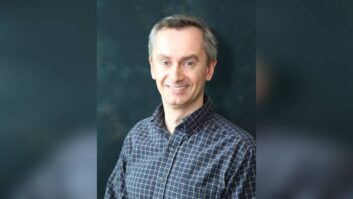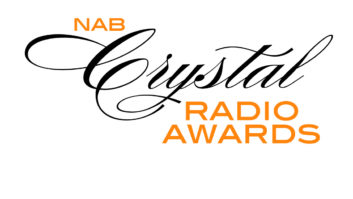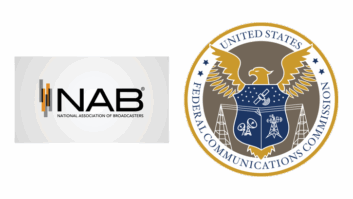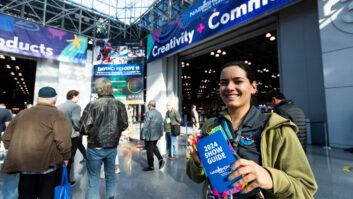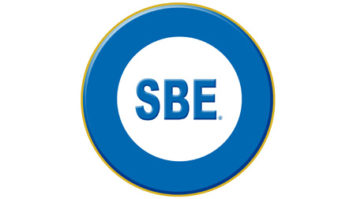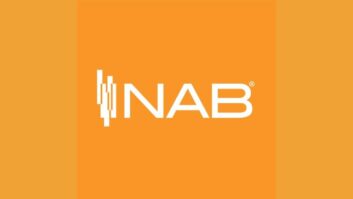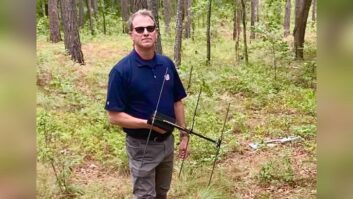Jumping from spacecraft engineering to broadcast technology might seem like a quantum leap (if we define quantum as impressively dramatic rather than tiny). For Ashruf El-Dinary, it started with a six-month contract to write software and led to a career in radio of 24 years and counting.
The senior vice president of digital platforms at Xperi Corp. oversees its HD Radio systems engineering teams, manages the certification and quality control processes, and represents HD Radio technology standards in discussions at the International Telecommunications Union and international regulatory bodies. He leads Xperi’s efforts for new broadcast applications, upgrades to emergency alerting, and deployment of digital radio solutions internationally.
But prior to his tenure in broadcasting, he worked at the Johns Hopkins University Applied Physics Laboratory, where he developed scientific instrumentation in support of space research programs. He also taught signal processing courses at the university’s Whiting School of Engineering night school.
So, he’s got some smarts.
El-Dinary is the 2022 recipient of the NAB Radio Engineering Achievement Award.
Recent honorees include Dave Hershberger, Jeff Welton, and Gary Cavell. New NAB President/CEO Curtis LeGeyt will present the Radio and Television Engineering Achievement Awards at the NAB Show in Las Vegas. This year’s television recipient is Peter Sockett, director of engineering and operations for Capital Broadcasting Company’s TV stations.
Rocket science
El-Dinary, 54, was born in Cairo, Egypt, and moved with his family to the United States in the early 1970s; he grew up in the Chicago area. Early interests included math, science, and a propensity to try to fix things.
“I recall my dad giving me a cassette tape of a Beatles album, and it sounded funny. Well, in the manufacturing process, the tape had been wound backward. Realizing this I disassembled the tape and rewound the tape. It took some patience,” El-Dinary said with a chuckle. “I was all about troubleshooting and figuring out how things worked as a 10-year-old.”
In high school El-Dinary often listened to shortwave radio and recalls being curious about broadcast radio and how it worked. He also dreamed of working on some cool technology or even a career in teaching. Astronomy and archeology were other childhood interests.
El-Dinary stayed in the Midwest to attend Purdue University and earn a degree in electrical engineering. A masters degree from Johns Hopkins University followed, with a concentration in communications and signal processing.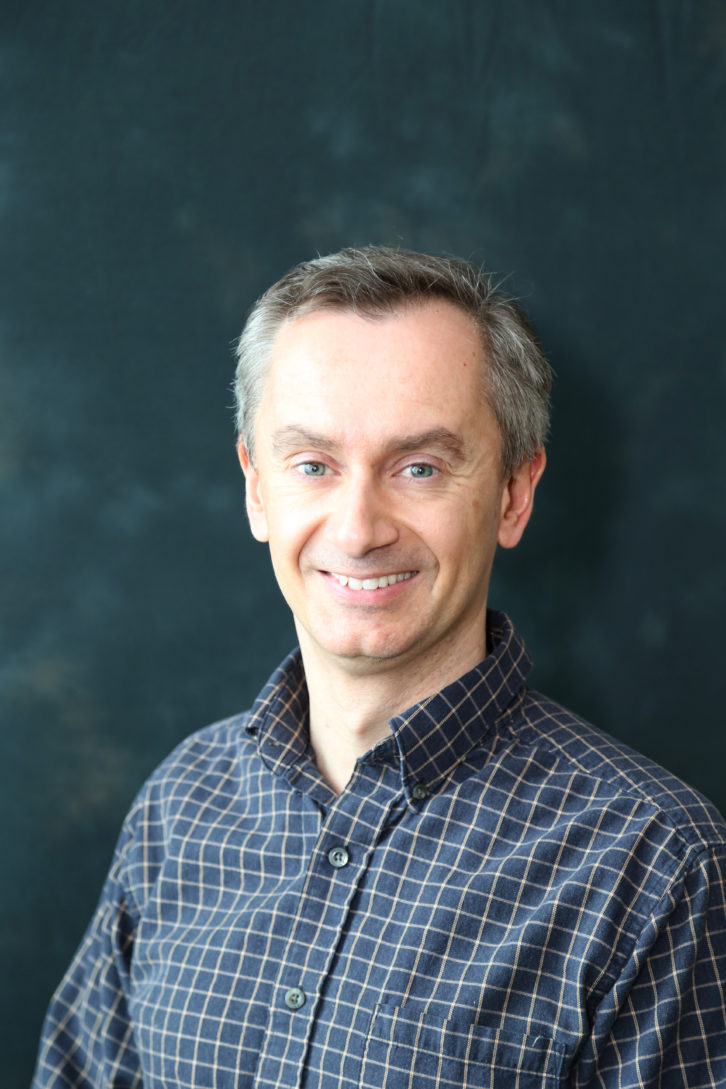
El-Dinary’s first job out of college was at the physics lab at Johns Hopkins, where he worked mostly in the space department. He helped launch satellites with technology and software he designed, which orbited Earth and took scientific measurements of asteroids.
It was during this time that El-Dinary took more interest in the mathematics of signal processing. “I was doing algorithm development and data science at the time and got excited about digital filters. All very novel stuff in the early 1990s.”
Then El-Dinary heard of an interesting company called Westinghouse Wireless, based not far from the school, which was looking for engineers to write software for new digital radio technology.
“I accepted a six-month contract to write software. That’s how it started,” El-Dinary said.
Westinghouse Wireless eventually would be renamed USA Digital Radio, a consortium of broadcasters developing in-band, on-channel technology in the United States. It would eventually merge with rival IBOC radio developer Lucent Digital Radio in 2000 to become iBiquity Digital, the forerunner to Xperi.
[For More News on the NAB Show See Our NAB Show News Page]
Career diversion
It was the signal processing part of the job that led to the change in career paths, El-Dinary said.
“I thought I would improve my programming skills and then be able to apply that in the future someplace else. But the future never changed, and I transitioned into a 23-year career here.”
The early years at USA Digital Radio/iBiquity were spent developing the signal processing technology and developing the algorithms that would define the standard as the digital radio business was transitioning.
“I became involved in the analysis and the commercialization of the technology in the early 2000s. We had to start thinking about the commercialization of the technology and how to get it into chips and get the software out and what does that look like,” El-Dinary said.
“We came up with the architecture solutions and developed relationships with manufacturers, both on the broadcast equipment and the receiver side. I then took over the technology transfer group in the business and worked with receiver manufacturers in Japan, Germany, and the United States.”
At the time, iBiquity was pushing the FCC to adopt its digital radio technology standard in the United States with the promise of CD-quality audio and additional wireless data capabilities. El-Dinary worked closely with Albert Shuldiner, who was then iBiquity’s general counsel, further defining the transmission standard for digital radio.
“I had more of the systems engineering perspective and could explain the standard to people and how to manage the updates of the standard,” El-Dinary said. (In 2018, Shuldiner was named to head the Audio Division of the FCC’s Media Bureau.)
The FCC ultimately decided in October 2002 to approve iBiquity’s HD Radio IBOC technology as the delivery method for hybrid digital radio broadcasting in the United States.
What followed was development of a receiver certification program for hybrid operation of analog and digital signals. An important part of that was building up customer support and relationships with manufacturers. He did that for the next 10 years or so before transitioning into more of a systems and R&D type of position at Xperi.
“We looked at further commercializing HD Radio and the features we could add, how to improve upon reception and troubleshoot issues,” El-Dinary said. “We wanted to make sure if there were problems in the field, we were there to solve it. And we did solve issues on both the receiver and the transmission side.”
The multicast capabilities of HD Radio quickly gained the attention of the broadcast industry, more so than the promise of improved audio sound, El-Dinary said.
Xperi reports that as of March 1, there are 2,346 radio stations in the USS broadcasting in HD Radio, mostly FMs, with a total of 4,471 channels of programming, including multicast channels.
Most of those stations are in larger markets. El-Dinary says the hope remains that additional radio broadcasters in small and medium markets will sign on HD Radio signals.
“Obviously, it’s still a voluntary transition at this point. There’s no mandate. As it makes sense for broadcasters, they can move forward to converting to a hybrid broadcast model of analog and digital,” El-Dinary said.
“(Xperi) is not actively working toward the goal of digital being mandated in the United States. At some point, it could happen if the industry wants to move in that direction. Or once there are enough digital receivers in the market to warrant a change.”
Xperi charges a one-time licensing fee of $10,000 for single main FM channel broadcasting, with payment plans available. Additional annual fees are based on a percentage of revenues for each additional multicast channel, with a $1,000 minimum per channel.
El-Dinary says Xperi remains focused on promoting all the services of HD Radio, including multicast capability but also enhanced metadata and the added value that it can bring for advertising clients, in addition to enhanced traffic services like Total Traffic Network and HERE Traffic.
“Those added services have added a lot of value for radio broadcasters and car manufacturers. From a technical perspective, it’s really just an added layer of data for Artist Experience or traffic data. It’s really very versatile,” he said.
Rocky start for AM
The initial launch phase of IBOC hybrid AM HD Radio did present challenges for Xperi, El-Dinary said, as the digital portion of the signal brought complaints about interference.
“Some of the digital carriers underneath the analog were audible on some legacy analog receivers, so that caused a problem. Once we went with the concept of using reduced data bandwidth but still carrying the signal, it cleaned up the experience. The AM band is just really challenging to deal with.
“However, we are seeing good success with all-digital AM transmissions. It has great reception, great coverage, low noise and no interference with adjacent stations. It’s a much better experience.”
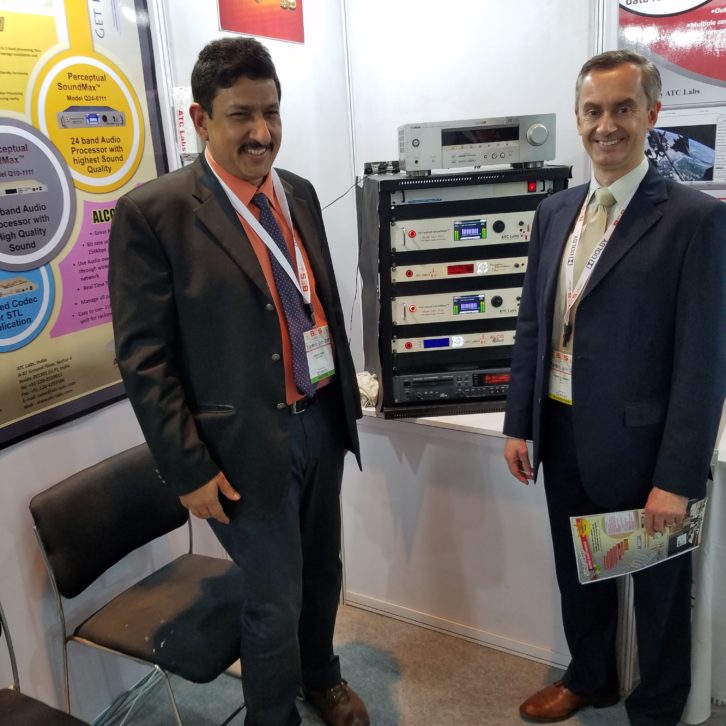
El-Dinary said Xperi has had a considerable number of broadcasters take advantage of a free early-adopter AM all-digital license — usually a commercial AM stations pay a one-time $7,500 licensing fee — but only a few have as of now launched the service.
“We see the capital investment for broadcasters to transition the equipment as slowing things down a bit, especially during the COVID-era. But we envision that as a growth area going forward.”
COVID also brought a temporary halt to travel for El-Dinary, who before 2020 spent much of his time on the road, focusing on visits to manufacturing partners in Japan, Korea, China and automotive partners across Europe.
“And I was busy looking at new broadcast opportunities in the Philippines and India. I was probably on the road at least three months out of the year.”
The HD Radio system in the U.S., Canada, and Mexico is well established, El-Dinary said. Global broadcast observers have been following Xperi’s testing of HD Radio in India, curious about that country’s eventual path to digital radio on the FM band. Xperi has been testing with All India Radio, El-Dinary said. Testing was completed in Delhi in February 2021 and in Jaipur, India, the following month.
Digital Radio Mondiale is also under consideration in India.
“It’s not clear what that country wants just yet. From a regulatory perspective, you have to realize that process takes years to complete. The government has to decide what they want to do for a solution. They are looking to the best and most reliable path forward to guarantee commercial success,” El-Dinary said.
“We think digital radio is well-suited for the market given all of the languages and dialects within India they need to support.”
Latin America and South America are potential future growth areas for HD Radio, El-Dinary said, with “a lot more activity and interest right now” in digital radio.
He continued: “It would make sense for the Americas region to be all one digital standard. That would be preferable from a manufacturing and standards perspective.”
Race for the dash
Xperi has spent a lot of time examining the in-cabin user experience. Its DTS AutoStage™ hybrid radio platform has gained the attention of the broadcast industry as Xperi lobbies for its use in the dashboard of connected cars.
El-Dinary says that although work on DTS AutoStage is “adjacent to” his broadcast responsibilities, there is significant overlap. He said the platform “is going to play a crucial role in the user experience. Broadcasters will certainly have a role now in the personalization of content and information in the dashboard.”
Implementing DTS AutoStage does raise some technical issues for Xperi broadcast engineers trying to perfect the user experience.
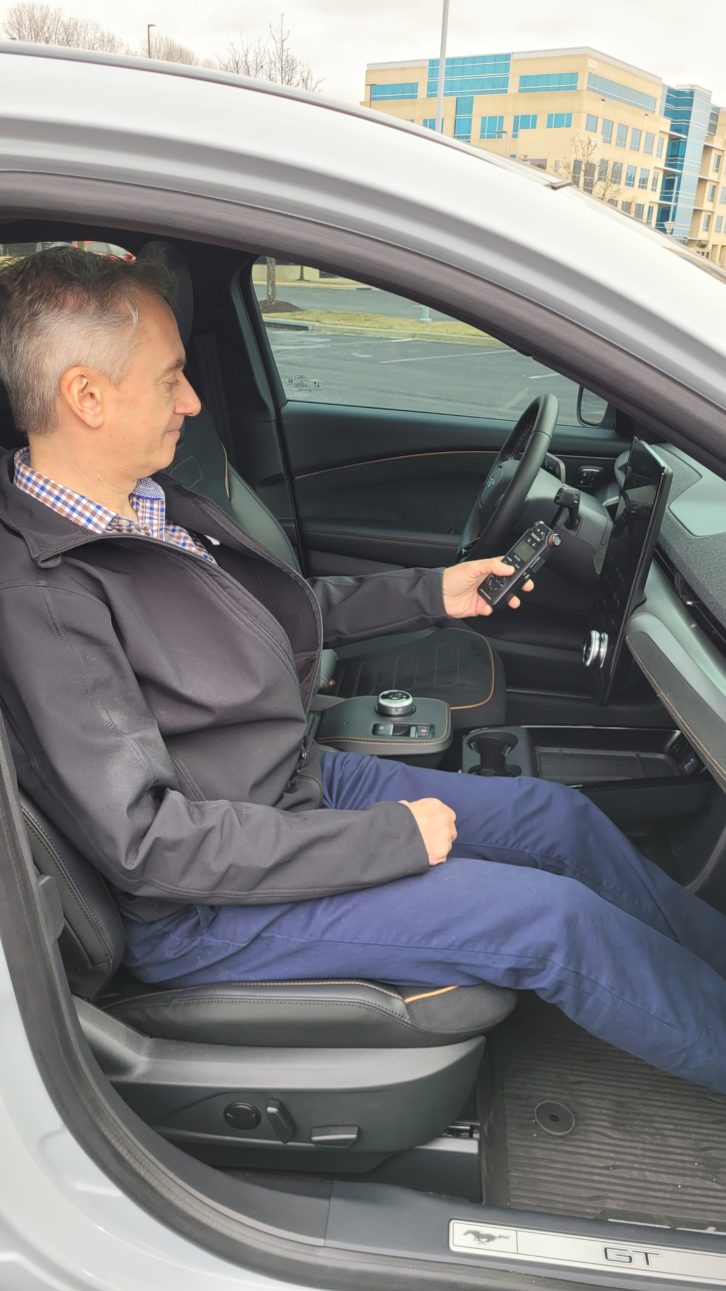
“The handoff of terrestrial broadcast to the IP content can be a challenge. Making sure the receiver knows which station it is monitoring within the coverage area and ensuring you get the right IP content and product delivered to the infotainment system,” El-Dinary.
With HD Radio technology shipped in 54% of all new cars sold in 2021, El-Dinary said he is excited about the future and continues to look at other audio enhancements utilizing DTS audio technology. Xperi Corp. is the parent company of DTS.
“Now that we are in the car, we can start looking at other things, including emotion detection or facial analyses that can help select the right radio station for your mood. We did an interesting live demo at CES in Las Vegas using in-car cameras able to detect mood based on whether a person is smiling or not.
“This is all within the DTS technology space (DTS AutoSense™) with our in-cabin solutions and connected car initiatives. It’s primarily for driver and passenger safety as vehicle entertainment becomes more immersive. It’s meant to cut down on distractions and measures driver attentiveness and activity, but there are other possible applications,” he said.
El-Dinary resides in Howard County, Md., with his wife Pam; his off-hours hobbies include yoga, kayaking, snowboarding, cycling and cooking.
Established in 1959, NAB’s Radio and Television Engineering Achievement Awards are given to individuals nominated by their peers for significant contributions to advancing broadcast engineering. NAB President/CEO Curtis LeGeyt will present the awards on Sunday, April 24.
HONOR ROLL
Recipients of the NAB Engineering Achievement Award are listed. Beginning in 1991, radio and TV winners were named; only radio winners are shown for those years.
1959 John T. Wilner
1960 T.A.M. Craven
1961 Raymond F. Guy
1962 Ralph N. Harmon
1963 Dr. George R. Town
1964 John H. DeWitt Jr.
1965 Edward W. Allen Jr.
1966 Carl J. Meyers
1967 Robert M. Morris
1968 Howard A. Chinn
1969 Jarrett L. Hathaway
1970 Philip Whitney
1971 Benjamin Wolfe
1972 John M. Sherman
1973 A. James Ebel
1974 Joseph B. Epperson
1975 John D. Silva
1976 Dr. Frank G. Kear
1977 Daniel H. Smith
1978 John A. Moseley
1979 Robert W. Flanders
1980 James D. Parker
1981 Wallace E. Johnson
1982 Julius Barnathan
1983 Joseph Flaherty
1984 Otis S. Freeman
1985 Carl E. Smith
1986 Dr. George Brown
1987 Renville H. McMann
1988 Jules Cohen
1989 William Connolly
1990 Hilmer Swanson
1991 George Marti
1992 Edward Edison & Robert L. Hammett
1993 Robert M. Silliman
1994 Charles T. Morgan
1995 Robert Orban
1996 Ogden Prestholdt
1997 George Jacobs
1998 John Battison
1999 Geoffrey Mendenhall
2000 Michael Dorrough
2001 Arno Meyer
2002 Paul Schafer
2003 John W. Reiser
2004 E. Glynn Walden
2005 Milford Smith
2006 Benjamin Dawson & Ronald Rackley
2007 Louis A. King
2008 Thomas B. Silliman
2009 Jack Sellmeyer
2010 Steve Church
2011 L. Robert du Treil
2012 Paul Brenner
2013 Frank Foti
2014 Jeff Littlejohn
2015 Thomas F. King
2016 Andy Laird
2017 John Kean
2018 Tom Jones
2019 Garrison Cavell
2020 Jeff Welton
2021 David Hershberger
2022 Ashruf El-Dinary
Randy J. Stine has spent the past 40 years working in audio production and broadcast radio news. He joined Radio World in 1997 and covers new technology and regulatory issues. He has a B.A. in journalism from Michigan State University.
